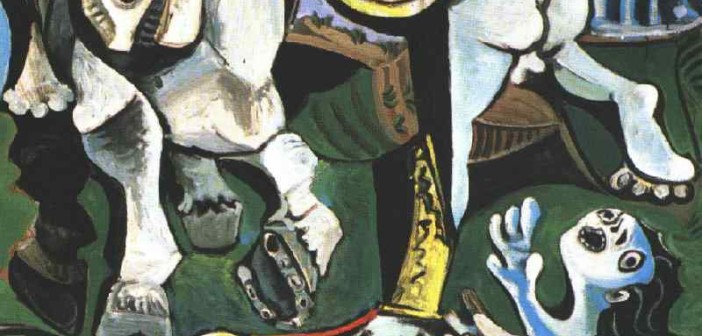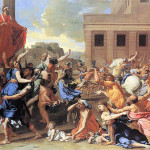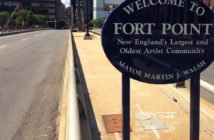The fabled abduction of the Sabine women is an episode in the history of Rome first recounted by Livy in Ab Urbe Condita and is supposed to have occurred shortly after the city’s founding by Romulus. This first generation of Roman men, seeking wives for themselves to found families, tried unsuccessfully to negotiate with the neighboring Sabine families who feared the establishment of Romulus’ city would emerge as a rival society. Not willing to appear weak, the Romans successfully abducted many of the female Sabines who eventually, after being implored and promised by Romulus free choice and civic and property rights, accepted Roman husbands. The Sabine men, led by Tatius, soon sought to free their sisters and daughters by force, but the women intervened and ended the fighting, reminding the men that the Romans are now their brothers and sons by marriage.
As a story, it’s an inspiring one, having been used by countless artists throughout the ages. In the past the tale has been spun to symbolize the importance of marriage, to plea with the people of a fractured France to reunite after the bloodshed of the revolution, and to celebrate the heroism and diplomacy of the Sabine women. Picasso’s version, painted in a matured cubist style and bold colors, slightly conflates the beginning and end of the story, depicting the brutish Romulus and Tatius ignoring and trampling on a mother and her child. Though not as prolific as his Guernica, the piece does well to justify Picasso’s reading of the historical events.
In the JFK Presidential Library and Museum, after passing through the years of his ascending political career, you enter a replica of the Main White House Corridor and are met with the October 1962 crisis quite soon, as he was within the term of his presidency. Correspondence from the days of the crisis lines the walls and a short documentary highlights how, for as much candor was related to the general public during the standoff, more information was held back. Off of the main corridor in a small anti-room dedicated to the 50th anniversary of the crisis, the large painting commands the space as the surroundings of the Kennedy Library place their own importance on the canvass. The effect of the painting is persuasive, echoing the standoff between superpowers that briefly held the world in standstill, though Picasso’s skilled hand suggests a too narrow reading of the related affairs.
Coming off of an arduous campaigning cycle, many have voiced their disappointment with a glaring lack of debate on foreign policy. As it has now been clocked and thoroughly dissected, we know that the third presidential debate, slated to have been solely on this topic, made it a mere 35 minutes before both candidates strayed far from those issues. To shrug off the importance of foreign politics and the public discussion of topics like wars and nuclear threats is as bad as ignoring earnest negotiations with adversaries and as damaging as turning too soon to war. By existing as a superpower we have, like the Sabines, married into the problems of the world be they nuclear or otherwise. This exhibit, at its best, not only denounces the horrors of war as Picasso elegantly illustrates, but also provides the necessary discussion of the vital importance of diplomacy in a nuclear age. Placed in the replica corridors of the White House, it also reminds us that the intricacies of that discussion rarely leave those tightly guarded walls.
- Pablo Picasso, Rape of the Sabine Women, 1962-1963, The Museum of Fine Arts, Boston
- Nicolas Poussin, Abduction of the Sabine Women, 1637-1638, The Metropolitan Museum of Art.
- Jacques-Louis David, Intervention of the Sabine Women, 1799, The Louvre, Paris.
Picasso's Rape of the Sabine Women is on view at the John F. Kennedy Presidential Library and Museum until January 6, 2013.







